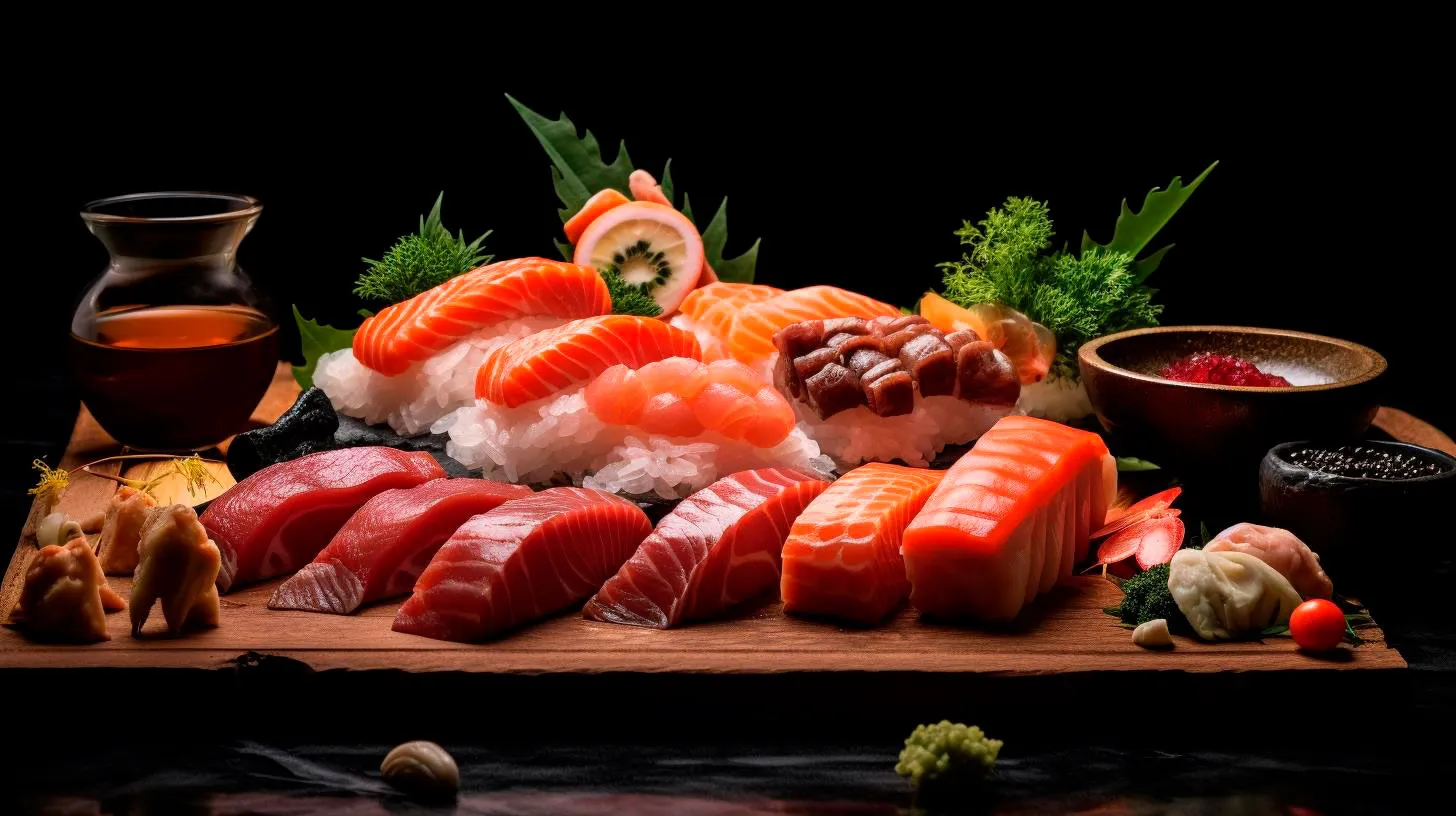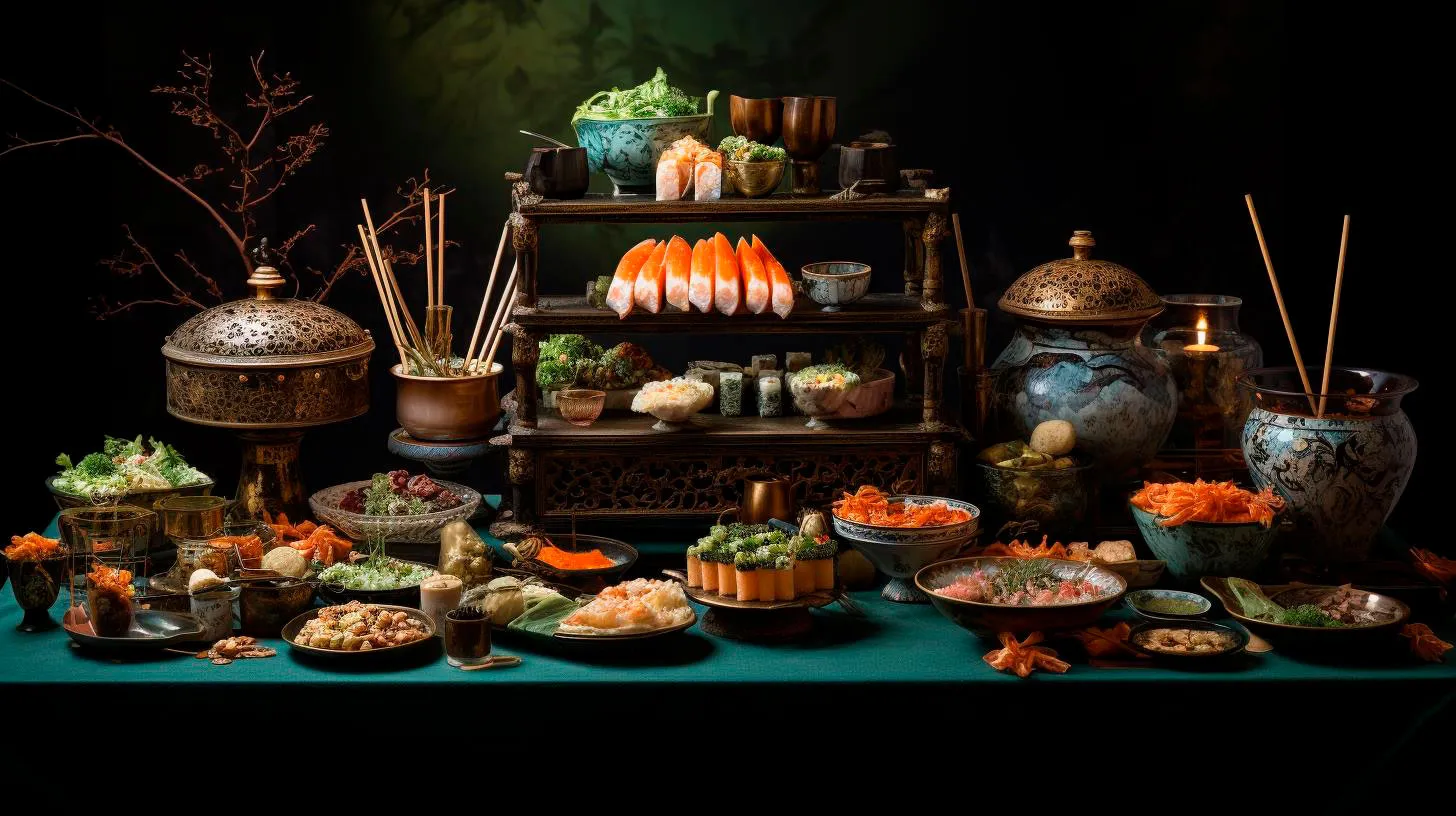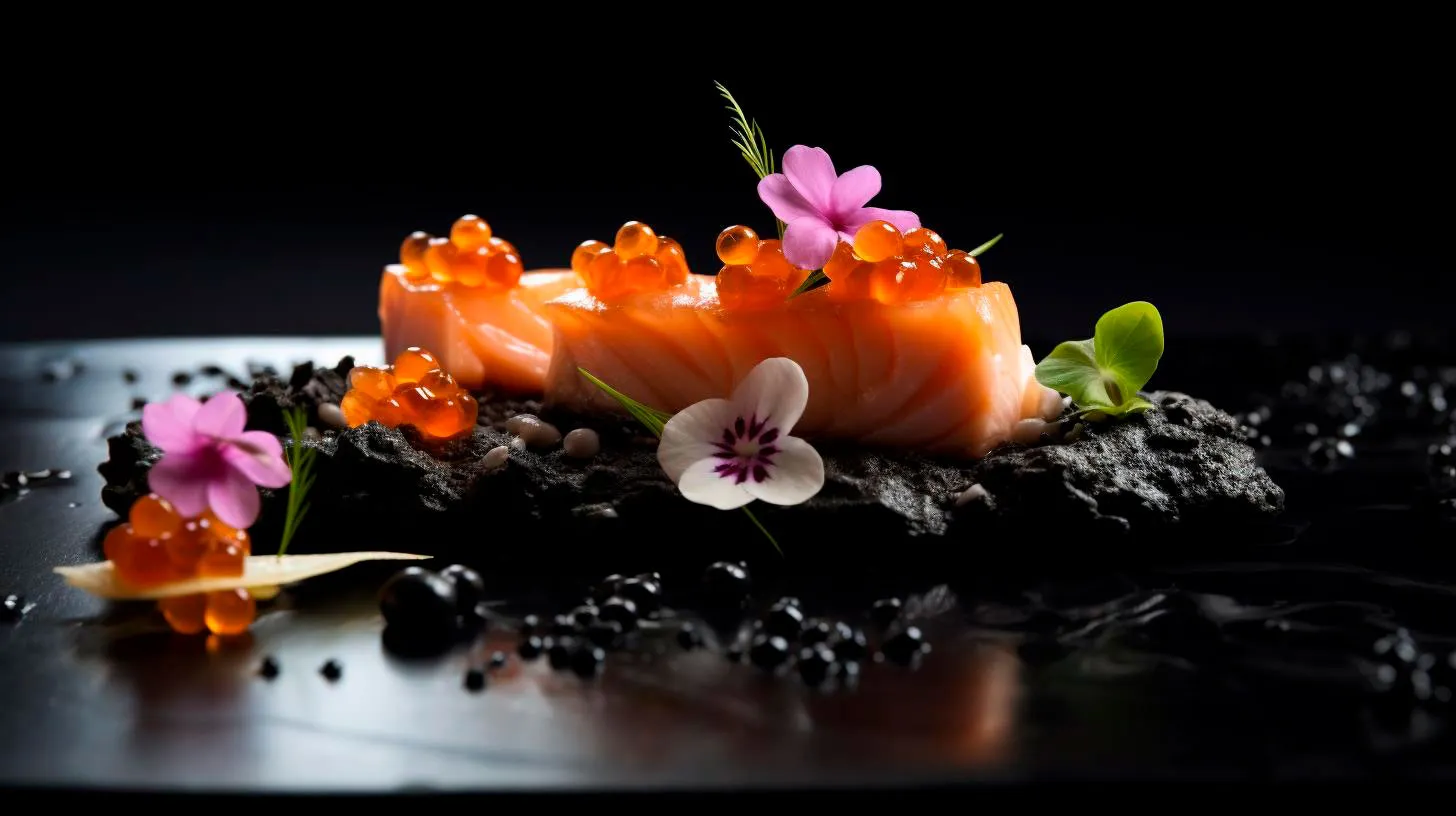Through the Lens: Unlocking the Fascinating World of Sushi Photography
In this article, we will explore the intriguing realm of sushi photography and discuss its techniques, challenges, and the story behind those stunning images.
The Art of Sushi Photography
Photographing sushi is an intricate process that requires skill, patience, and a deep understanding of the subject. It is an art form that aims to capture the essence and allure of these delicate creations. Sushi photographers use their lenses to showcase the craftsmanship of the chef, the vibrant colors of the ingredients, and the texture of each dish.
Key Takeaways:
- Sushi photography is an art form that emphasizes the beauty and craftsmanship of sushi.
- Photographers aim to capture the vibrant colors, textures, and intricate details of each dish.
- Patience, attention to detail, and technical expertise are essential for successful sushi photography.
The Challenges Faced in Sushi Photography
Capturing the perfect sushi photograph can be a daunting task, as it presents several unique challenges. Here are some of the common hurdles photographers encounter:
- Time Sensitivity: Sushi is best enjoyed when it’s fresh and at its peak quality. Photographers must work quickly to capture the dish before it loses its visual appeal.
- Lighting and Reflections: Lighting plays a crucial role in sushi photography, as it accentuates the colors and textures. However, it can be challenging to control reflections from the glossy surfaces of ingredients like fish or rice.
- Composition: Arranging sushi in an aesthetically pleasing manner requires artistic vision and attention to detail. Photographers must carefully consider the placement of each element to create a visually stunning composition.
Key Takeaways:
- Sushi photography presents unique challenges, including time sensitivity, lighting, and composition.
- Photographers need to work quickly to capture the dish at its freshest and most visually appealing moment.
- Controlling reflections and arranging the sushi impeccably is essential for a captivating photograph.
The Techniques behind Captivating Sushi Photography
Mastering the art of sushi photography requires a combination of technical expertise and artistic flair. Here are some techniques employed by sushi photographers to create captivating images:
- Macro Photography: By using macro lenses, photographers can capture intricate details and showcase the delicate textures of sushi.
- Contrasting Colors: Incorporating vibrant and contrasting colors enhances the visual appeal of sushi. This technique creates a visually striking image that captures the viewer’s attention.
- Depth of Field: Manipulating the depth of field allows photographers to emphasize certain elements of the dish while adding a sense of depth and dimension to their photographs.
Key Takeaways:
- Macro photography enables photographers to capture intricate details and textures.
- Contrasting colors and depth of field techniques enhance the visual appeal of sushi photographs.
The Role of Sushi Photography in the Culinary World
Sushi photography not only serves as a feast for the eyes but also plays a significant role in the culinary world. The captivating images displayed on menus, cookbooks, and online platforms entice customers, showcasing the quality and artistry of the sushi. They serve as powerful marketing tools and contribute to the popularity of sushi worldwide.
Key Takeaways:
- Sushi photography plays a vital role in showcasing the artistry and quality of sushi.
- Images displayed on menus and online platforms entice customers and serve as effective marketing tools.
Conclusion
Sushi photography is a captivating art form that elevates the appreciation of this beloved Japanese delicacy. Through their lenses, photographers showcase the colors, textures, and craftsmanship of sushi, inviting viewers to immerse themselves in its beauty. The challenges faced in sushi photography require skill and technical expertise, while the techniques employed create visually stunning images that leave a lasting impact. As sushi continues to conquer the hearts of food enthusiasts worldwide, the art of sushi photography will undoubtedly continue to inspire and fascinate.
A Visual Feast Showcasing the Intricate Visual Appeal of Sushi through Photography
Each sushi roll and nigiri piece is meticulously crafted, resulting in a stunning array of edible artwork.
The Artistry of Sushi
Whether you are a sushi connoisseur or simply a visual enthusiast, there’s no denying the irresistible allure of sushi’s visual appeal. In the hands of a skilled sushi chef, this traditional Japanese dish transforms into a representation of art. Here are some key reasons why sushi is a visual feast:
- Vibrant Colors: Sushi showcases a vibrant spectrum of colors, ranging from the bright orange of salmon to the deep green of avocado. Each color is carefully selected to create a visually striking plate.
- Precision and Symmetry: Sushi chefs take pride in their precision and attention to detail. From perfectly sliced fish to symmetrical rolls, every element of sushi is crafted with great care.
- Texture Play: Sushi offers a variety of textures, from soft and creamy to crunchy and crispy. These textures are strategically combined to create a harmonious dining experience.
- Garnishes and Presentation: Sushi is often adorned with beautiful garnishes like microgreens, edible flowers, and delicate sauces. These elements enhance the presentation and add another layer of visual appeal.
Capturing the Visual Beauty through Photography
Photography allows us to immortalize the intricate visual appeal of sushi. As sushi lovers, we can use our cameras to capture the beauty of these edible masterpieces, preserving them for future enjoyment. Here are some tips to help you capture stunning sushi photographs:
- Lighting: Good lighting is crucial when photographing sushi. Natural light works best to bring out the vibrant colors and textures. Avoid harsh overhead lighting and opt for soft, diffused light sources.
- Composition: Experiment with different compositions to highlight the artistry of sushi. Play with angles, focus, and placement to create visually interesting shots.
- Mood and Atmosphere: Consider the overall mood and atmosphere you want to convey in your photographs. Whether it’s a clean and minimalistic style or a warm and cozy ambience, choose your props and backgrounds accordingly.
- Macro Photography: Use macro lenses or settings to capture the intricate details of each sushi roll. Macro photography allows you to explore the fine textures and precise craftsmanship.
The Visual Appeal and Social Media
Sushi’s visual appeal has not gone unnoticed in the realm of social media. Platforms like Instagram have become a hub for sharing stunning sushi photographs. The growing trend of food photography, especially sushi, has given rise to sushi influencers and visual storytelling around this culinary art form.
For businesses in the food industry, utilizing the visual appeal of sushi through photography can be an effective marketing tool. Here are some key takeaways:
- Enhanced Branding: Sharing visually appealing sushi photographs can create a strong branding presence for restaurants and food establishments. It allows them to showcase their creativity and culinary expertise.
- Increased Engagement: Eye-catching sushi photographs are more likely to generate engagement on social media platforms. Likes, comments, and shares can help increase the reach and visibility of a brand.
- Inspiration and Aspiration: Beautiful sushi photography can inspire and evoke a sense of aspiration in viewers. It can encourage them to try new sushi creations or visit a particular restaurant.
According to recent statistics, over 60% of consumers consider visual appeal as a major factor in their dining choices. With sushi being a visually captivating dish, leveraging its visual appeal through photography can benefit businesses and individuals alike.
Conclusion
Sushi is not just a culinary delight; it is a work of art. Its intricate visual appeal is a testament to the skill and creativity of sushi chefs. By capturing and sharing the beauty of sushi through photography, we can celebrate this art form as well as tempt others to experience it. So, next time you indulge in a plate of sushi, take a moment to appreciate its visual feast before savoring each delectable bite.
The Art of Capturing Sushi: Elevating Its Allure Through Photography
Whether you are a professional photographer or an amateur foodie, these tips will help you showcase the beauty of sushi dishes like never before.
Mastering Lighting for Sushi Photography
Lighting plays a crucial role in food photography, and capturing sushi is no exception. The right lighting can enhance the colors, textures, and details of the sushi, making it look more appetizing and appealing. Here are some key points to consider:
- Use natural light whenever possible: Natural light provides a soft and even illumination that complements the delicacy of sushi. Position your sushi near a window or take outdoor shots for the best results.
- Avoid harsh shadows: Harsh shadows can distract from the beauty of the sushi. Use diffusers or reflectors to soften the light and minimize shadows.
- Experiment with different angles: Try shooting from different angles to find the one that highlights the sushi’s textures and details most effectively.
Creating Compelling Compositions
Composition is key in food photography, and sushi offers endless possibilities for creative arrangements. Here are some tips to create eye-catching compositions:
- Consider the rule of thirds: Divide your frame into a 3×3 grid and position the sushi along the gridlines or at the intersections to create a visually pleasing composition.
- Include props and garnishes: Adding complementary props such as chopsticks, soy sauce, or wasabi can enhance the visual appeal and tell a story about the sushi.
- Focus on the details: Highlight the intricate details of the sushi, such as the grains of rice, the texture of the fish, or the glistening of the soy sauce.
Enhancing Colors and Textures
Sushi is known for its vibrant colors and inviting textures. To capture these attributes effectively, follow these suggestions:
- Use a macro lens: A macro lens allows you to capture the intricate details and textures of the sushi up close. It will make the colors and textures more pronounced in your photographs.
- Experiment with different backgrounds: Choose backgrounds that contrast or complement the colors of the sushi to make it stand out. Wooden boards, slate, or simple white backgrounds work well.
- Use a shallow depth of field: By using a wide aperture, you can blur the background and focus solely on the sushi, making it the hero of the image.
Editing and Sharing Your Sushi Photographs
Once you have captured stunning sushi photographs, the final step is to edit and share them. Here are some tips to enhance your images and impress your audience:
- Adjust the colors and contrast: Use photo editing software to fine-tune the colors, contrast, and exposure of your images. Make sure the sushi looks as appetizing on screen as it does in reality.
- Showcase variety: Display a diverse range of sushi dishes in your portfolio or social media accounts. This will showcase your versatility and attract a wider audience.
- Engage with the sushi community: Share your photographs on food photography platforms or social media groups dedicated to sushi lovers. Engage with the community, learn from others, and receive valuable feedback on your work.
The Allure of Sushi Photography
Sushi photography offers a unique opportunity to capture the essence and beauty of this beloved cuisine. With the right techniques, lighting, composition, and editing, you can elevate sushi’s allure and create captivating images that will leave viewers craving a taste. Remember to experiment, have fun, and let your passion for sushi shine through your photography.
Key Takeaways:
- Master lighting techniques to enhance the colors and details of sushi photographs.
- Create compelling compositions by following the rule of thirds and incorporating props.
- Pay attention to colors and textures, using a macro lens and experimenting with backgrounds.
- Edit your images to ensure they look as appetizing on screen as they do in real life.
- Share your work with the sushi community for feedback and engagement.
From Plate to Pixels: Unveiling the Aesthetic Essence of Sushi Photography
The Artistry of Sushi Photography
Sushi not only entices our taste buds but also captivates our eyes with its impeccable display. Through the lens of a camera, sushi transcends from a mere dish into a work of art. The artistry in sushi photography lies in its ability to showcase the aesthetics and intricate details of each piece.
While techniques and styles may vary from photographer to photographer, there are some key elements to consider when capturing the essence of sushi:
- Focus on Details: Emphasize the texture, colors, and composition of each sushi piece. Zoom in to capture the delicate grains of rice, the glistening fish, or the vibrant garnishes.
- Play with Lighting: Experiment with natural or artificial lighting to create different moods and enhance the visual appeal of your sushi. Soft lighting can bring out the delicacy, while dramatic lighting adds a touch of intrigue.
- Maintain Simplicity: Let the sushi take center stage. Avoid cluttered backgrounds or distracting props that can overshadow the main subject.
- Experiment with Angles: Capture sushi from various angles to explore different perspectives. Overhead shots, close-ups, or even shots taken at eye-level can provide unique viewpoints.
The Advantages of Sushi Photography
Sushi photography offers numerous advantages beyond satisfying our visual senses. Let’s explore some of the notable benefits:
- Preserving Memories: Whether you are a sushi chef showcasing your creations or a food enthusiast capturing your culinary journey, sushi photography allows you to immortalize your moments and creations.
- Marketing Tool for Restaurants: High-quality sushi photography serves as an effective marketing tool for restaurants. Eye-catching visuals attract potential customers and elevate the perception of the dining experience.
- Social Media Engagement: In an era dominated by social media, striking sushi photography can garner attention and engagement from food enthusiasts, thus increasing your online presence.
- Cultural Appreciation: Sushi photography not only celebrates the aesthetics of the cuisine but also fosters cultural appreciation. It allows us to delve into the rich history and traditions associated with this iconic Japanese dish.
Key Takeaways: Mastering the Art of Sushi Photography
Now that we have explored the world of sushi photography, here are some key takeaways to help you excel in this art form:
1. Practice and Patience:
Like any other form of photography, practice is essential to refine your skills. Take your time to experiment with different techniques, lighting, and angles to master the art of sushi photography.
2. Attention to Detail:
Pay utmost attention to the details while capturing sushi. Showcase the precision in every slice, the freshness of ingredients, and the overall craftsmanship behind each piece.
3. Tell a Story:
Go beyond capturing individual sushi pieces. Take a series of photographs that tell a story, portraying the journey of sushi from its preparation to the final presentation.
4. Collaborate with Experts:
Work closely with sushi chefs or food stylists who possess intricate knowledge of sushi presentation. Their expertise will enhance your photography and ensure authenticity in capturing the essence of this culinary art.
As you embark on your sushi photography journey, let your creativity flow and develop your unique style. Combining your passion for photography and love for sushi will undoubtedly yield captivating results. Happy shooting!



